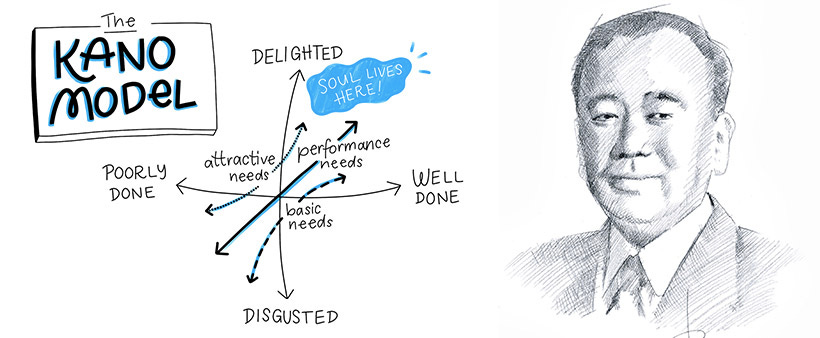Kano Model: Prioritise what customers love
Kano Model is one of the most under-utilised analysis to prioritise product features in Businesses.
What if you could know which features customers would absolutely love/hate/neutral?
Here's all you need to know to apply Kano analysis, summarised in <5 mins
(Image from https://www.lean-6-sigma.nl)
Before we go into the 5 minute summary, do not forget to Subscribe to Productify:
Steps to analyse features using Kano Model:
1/ Figure out set of features or value propositions that you want to validate with Kano model. Ensure that # of features are not too many, ideally choose upto 10 most important ones but do not exceed 20 features.
2/ Choose set of customers that best represent the segment that you want to target. If you're validating totally new features, you could survey your existing loyal/casual users depending on your goal (acquisition/retention). Or you could even survey wider potential population.
3/ For each feature, ask Qs:
a/ What is this feature was absent? or if you have less of this feature?
b/ What if this feature was present? what if you have more of this?
Possible answers to choose:
•I like it
•I expect it
•I am neutral
•I can tolerate it
•I dislike it
4/ Then, plot the answers in a grid (check sample image below from qualtrics.com) .
Example: If for a given feature, majority customers say 'I like it' for Q(a) and 'I am neutral' for Q(b) you can say the feature is a Attractive/Delight feature and not a must-have.
5/ Similarly you can classify your features into: Attractive features: Create Delight Must-be features: Basic expectations Performance features: More the better Indifferent features: Customers don't care Questionable features: Conflicting responses (no conclusion) Reverse: Kill
6/ You can plot your features in a 2x2 grid (screenshot from lean-wiki.nl)
Features below red curve are Must-be Features in green curve are delight features Features on orange line are performance features (More the better)
Summary
The Kano Model It provides a system to classify customer reactions to product features. The result is a better understanding of what the customer values. Using the model you will have one more data point (customer perception) besides the business/cost impact.
If you liked the <5min summary, do not forget to like/comment/share this post on your social media:







